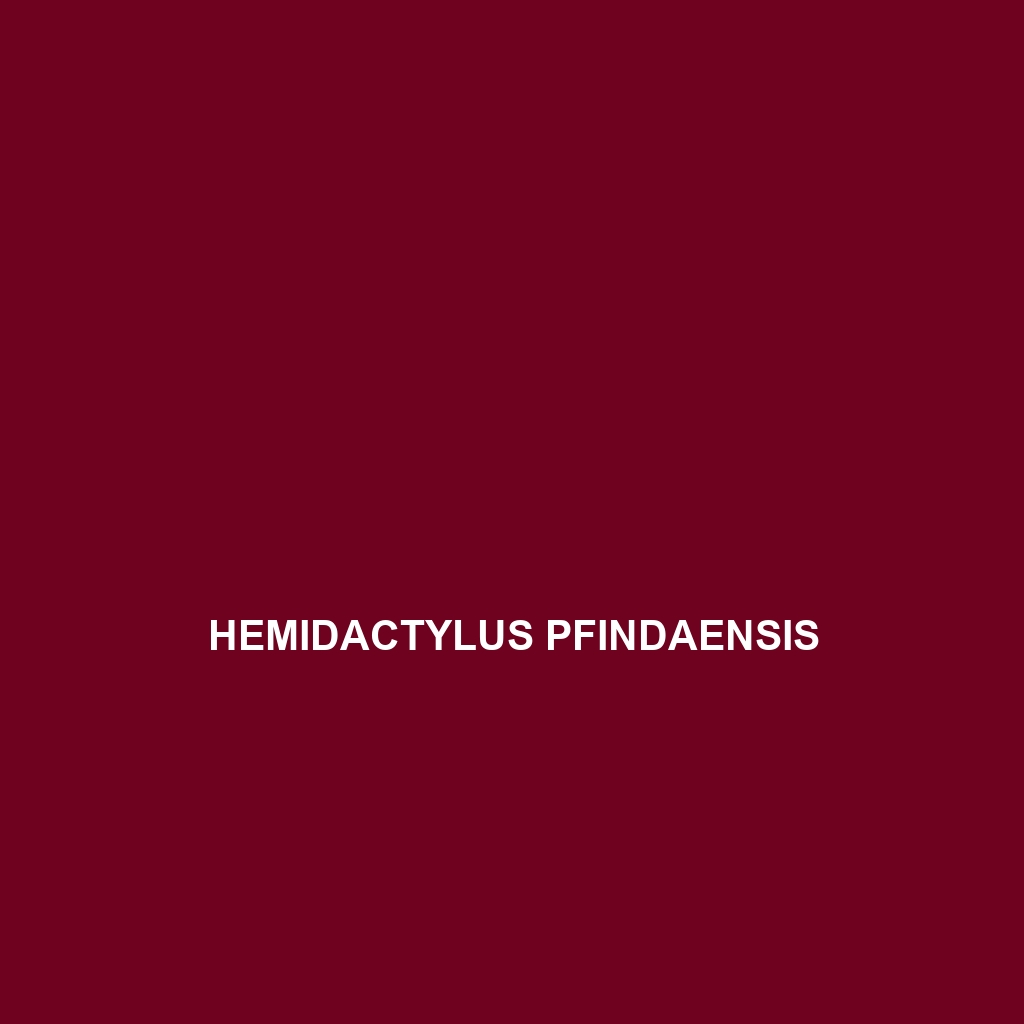Common Name
Hemidactylus persicus
Scientific Name
Hemidactylus persicus
Habitat
Hemidactylus persicus, commonly known as the Persian Gecko, primarily inhabits arid and semi-arid regions, specifically found across the Middle East. Its distribution extends from Iran and Afghanistan to parts of Iraq and Oman. This species prefers habitats such as rocky outcrops, agricultural fields, and urban environments where it can easily find refuge among stones and debris. The typical climate in these regions is characterized by hot summers and mild winters, often featuring sparse vegetation. The Persian Gecko is known to adapt well to both natural habitats and human-altered landscapes, making it a common sight in human dwellings.
Physical Characteristics
The Persian Gecko exhibits a slender body, reaching lengths of approximately 10 to 15 centimeters. Its skin is typically covered in a series of small, smooth scales which can range in color from beige to light brown, often with dark mottling that provides effective camouflage against rocky substrates. One distinctive feature of Hemidactylus persicus is its enlarged toe pads, which possess setae (tiny hair-like structures) that enhance its gripping ability on various surfaces. This unique adaptation allows for excellent climbing skills, particularly in rocky or vertical environments.
Behavior
Hemidactylus persicus is predominantly nocturnal, preferring to be active during the cooler nighttime hours. This behavior is advantageous as it minimizes exposure to the harsh daytime sunlight and allows it to hunt with the cover of darkness. During the breeding season, males engage in vocalizations and displays to attract females, showcasing elaborate mating rituals. Territorial disputes may occur as males compete for dominance, often exhibiting aggressive behaviors such as head-bobbing and tail twitching. Socially, Persian Geckos can be solitary or found in small groups, often cohabiting in crevices or as they emerge from their shelters at dusk.
Diet
The dietary habits of the Persian Gecko are primarily insectivorous, feeding on a variety of terrestrial insects including crickets, moths, and beetles. Its hunting strategy involves actively foraging during the night, using its keen eyesight to locate prey. While primarily a carnivore, Hemidactylus persicus does occasionally consume other small invertebrates, exhibiting some degree of omnivorous behavior under certain conditions. Its feeding patterns are opportunistic, often dictated by the availability of prey in its environment.
Reproduction
The reproductive cycle of Hemidactylus persicus is primarily seasonal, with mating occurring in the spring to early summer. Females typically lay two eggs per clutch, which are deposited in secluded locations to protect them from predators. The incubation period lasts around 6 to 8 weeks, after which hatchlings emerge fully formed and independent. Parental care is absent, as the eggs and hatchlings rely solely on environmental conditions for survival. The young geckos are miniature versions of the adults and begin foraging for food shortly after hatching, emphasizing their rapid development.
Conservation Status
Currently, Hemidactylus persicus is classified as a species of Least Concern by the International Union for Conservation of Nature (IUCN). This status is attributed to its wide geographical distribution and adaptability to different environments, including human settlements. However, habitat destruction and urbanization pose potential threats to its populations. Conservation efforts focus on habitat preservation and raising awareness of the ecological role that Persian Geckos play in their environments.
Interesting Facts
Hemidactylus persicus is known for its remarkable ability to regenerate its tail after losing it, a common defense mechanism among lizards. This adaptation not only provides a means of escape from predators but also allows the gecko to continue living post-injury. Furthermore, these geckos are capable of varying their colors slightly based on environmental conditions, enhancing their camouflage and survival chances.
Role in Ecosystem
Hemidactylus persicus plays a vital ecological role as both a predator and prey within its habitat. By preying on various insects, it helps control insect populations, thereby contributing to the ecological balance. Additionally, Persian Geckos serve as prey for larger predators such as snakes and birds of prey, making them an integral part of the food web. Their presence is indicative of a healthy ecosystem, and they contribute to maintaining biodiversity within their habitats.
